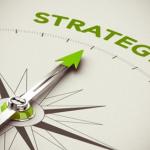Suppose you were asked to distil your entire business strategy into a single graph or visualisation...
 We’ve all heard the phrase, “Culture Eats Strategy”. This quote often attributed to Peter Drucker is seared into the minds of many as the reason why Strategy often fails. But for some reason, I’ve never been able to fully buy into this statement. Am I alone in this thinking?
We’ve all heard the phrase, “Culture Eats Strategy”. This quote often attributed to Peter Drucker is seared into the minds of many as the reason why Strategy often fails. But for some reason, I’ve never been able to fully buy into this statement. Am I alone in this thinking?
Is Culture really the enemy of Strategy? Or is Culture just another headwind that needs to be overcome?
What is Culture?
Culture is a shared human identity. It’s also, for all intents and purposes, a qualitative measurement not a quantitative measurement. In other words, you can describe culture far more easily than you can quantify culture.
But why is this last point important? Well, it’s important to recognize that Strategy is measurable (using DCF analysis and other similar techniques). If culture were quantifiable, one could easily do a cost-benefit analysis and logically choose culture over strategy, but you can’t. As a result, choosing culture over Strategy seems more like an excuse than an analytical evaluation…the convenient bogeyman of Strategy.
How Strategy Actually Eats Culture
Contrary to the original statement, Good strategy eats culture when a company’s leadership team recognizes that Strategy requires transformation (i.e. a cultural change).
Microsoft, under the leadership of Satya Nadella, is a perfect example of implementing a successful strategy that required a significant shift in internal culture. Prior to Nadella, the business was operating under a culture of independent segments that ultimately competed for resources and disagreed on fundamental strategies. As a result, they often confused their customer base by dropping products or failing to integrate their ecosystem.
Another way to explain how Strategy eats Culture is by thinking in terms of disruption. The organizations that have the best strategies are often the ones that not only disrupt corporate cultures but human culture as well. McDonald's, Uber and Starbucks are all good examples of companies that have changed not only their own corporate culture but also world culture.
Why Culture Isn’t Enough
Pitting Culture against Strategy isn’t enough, but I do think it’s on the right track.
Culture is in many ways the natural state of a group of people. But I think we need to dig a little deeper. What causes small groups and even large societies to gravitate to a specific culture? What makes one company behave so differently than another?
The Real Enemy of Strategy
The real enemy of Strategy is not culture, per se, but Efficiency.
This can be summed up by the phrase, “A bird in the hand is worth two in the bush”. In other words, what’s easy to achieve today is perceived to be worth more than the possibility of greater success in the future.
Unlike Culture, Efficiency is a measurable element. This is key because one can now attempt to rationalize short-term efficiency over long-term strategy.
As a result, it’s natural to want to conclude that if things are working today, why do I need to plan for the future? This is a common way of thinking despite the fact that planning for the future is actually what makes the human race such a dominant species.
Culture and Efficiency
In many ways, Culture represents the most efficient state of a given society. What works in Jamaica or Brazil doesn’t always work in London, New York or Tokyo. Likewise, what works in one company doesn’t always work in another. This comes down to optimizing efficiency in a given environment.
Is Efficiency Eating Strategy?
No, but we are living in a world where efficiency is winning. Short-term earnings and a fear of failure is driving down the emphasis on Strategy. Chasing trends rather than building assets seems to be the preferred route for many companies. This is undoubtedly fueled by access to instant data. IoT, Mobile, Wearables, and Search are all forms of technology that are all helping to improve efficiency.
The Role of Efficiency in Technology
One thing is for sure, you will never be more efficient than a computer. Due to modern computing power and the ability to capture and analyze immense amounts of data, computers are enabling organizations to automate efficiency at greater rates.
Artificial Intelligence is perhaps the poster child for improving efficiency. The ability to crunch real-time data and make an instant decision is no longer a sci-fi story. Whether we realize it or not, we are starting to use it in our everyday life.
The Rise of Strategy
As good as Artificial Intelligence (AI) is, it is miles away from taking on the human element associated with good Strategy. Rather than trying to use AI to drive Strategy, we need to think about how AI can execute strategy and optimize tactical planning.
Thinking outside of the box. Paving new roads and evaluating the discrete, real options that are well within reach is what enables a good strategy to not only change culture but also take on an over-focused fixation on short-term efficiency.
The article was first published in Unit4 Prevero Blog
Subscribe to
FP&A Trends Digest

We will regularly update you on the latest trends and developments in FP&A. Take the opportunity to have articles written by finance thought leaders delivered directly to your inbox; watch compelling webinars; connect with like-minded professionals; and become a part of our global community.






